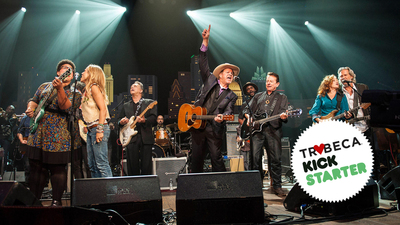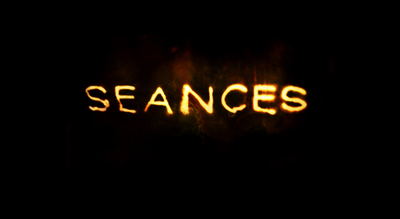
BY JULIA LEVY |
Storytelling, Audiences, and Social Influence, or Why Whoopi Goldberg Turned to Kickstarter
Storytelling won’t die, movies will meet audiences on their own turf, and social influence will drive content. Welcome to the Future of Film, according to a panel of experts on last week’s Advertising Week panel.

Whoopi Goldberg is a product of Hollywood: she was Celie Johnson in The Color Purple in 1985, Oda Mae Brown in Ghost in 1990, and Sister Mary Clarence in Sister Act in 1992. She has won an Oscar, a couple of Emmys and Golden Globes, a Tony, and a Grammy.
But this past June, she turned not to a studio but to Kickstarter, the crowd-funding platform, for the $65,000 she needed to finish producing her documentary about Moms Mabley, a standup comedian who is one of Ms. Goldberg’s role models.
She raised what she needed, but the effort wasn’t totally stress-free. “People got really pissed at me,” Ms. Goldberg said last week at an Advertising Week panel discussion on the Future of Film. “People just assume that you’re sitting on wads of dough.”
Welcome to today—when the studios are churning out sequels, when producers are conducting experiments with new distribution models, when celebrities are turning to Internet supporters to fund their passion projects, and when brands that used to focus on creating 30-second spots are creating feature-length films.
It’s clear that today’s film industry is looking less and less like the film industry of the 20th Century. So, what’s in store for the future? The Ad Week panel—which included Ms. Goldberg, as well as Tribeca Enterprises’ Jon Patricof, ESPN Films’ Connor Schell, GE’s Judy Hu, and Ogilvy’s Doug Scott—proposed some answers. Here are the five top lessons of the afternoon:
1. Storytelling won’t die—if anything, it will grow stronger.
A lot of top movies today are not telling original stories: they are sequels or prequels; they are cinematic versions of popular books; they are remakes of popular classics. But don’t be fooled. Storytelling will become more important than ever in the years to come.
“I don’t think the public has given up on original storytelling,” Ms. Goldberg said. “Now that we’ve given everybody the ability to have an opinion, everybody does.” Mr. Scott said there is increasing competition for leisure time, and spinoffs are safe bets. But, he said, audiences are craving stories told by independent voices.
2. Movies will meet audiences on their own turf.
The studios are perpetually worried about declining box office receipts. The New York Times reported last month that ticket sales were down three percent over the summer.
But with new digital platforms and distribution models, movies will—more and more—meet consumers where they are. “We want our audience to find these films wherever they’re consuming,” Mr. Schell said.
3. Social influence will drive content.
A news story last week contended that studios are now relying on Klout scores to choose projects because stars with serious social media savvy are valuable assets. As Twitter, Facebook, and other social platforms increasingly make it possible to track trust and influence, they also become ways to predict how popular a star will be or how quickly an idea will catch on.
In this environment, stars like Whoopi Goldberg—who regularly interacts with her nearly 260,000 Twitter followers—will be better positioned than social media hermits to launch new projects and tell new stories.
4. It will be attractive (and easy) to create films without going to film school.
With technology making it cheaper and easier to make movies, and frustration with the old studio system growing, more and more people (and brands) are creating films. GE has created about 30 short films to promote what Ms. Hu called “inspirational messages,” and ESPN has created 45 feature-length documentaries about sports. Mr. Patricof said the Tribeca Film Festival is receiving more and more submissions each year. (This past year, it got about 6,000.) The panelists seemed confident that this trend would continue as the technology continues to improve.
“Society looks for stories. We want to learn. We want to laugh. We want to have connections with people who have similar interests,” Mr. Scott said. Social media, he said, is giving brands a new outlet for telling stories and creating what he calls “cultural artifacts.”
5. Re-education will be required to ensure survival.
With new players—from individuals to big brands—popping up regularly in the film industry, the old players need to forget some of the rules they have learned over the course of their careers.
“Filmmakers have to un-learn what they’ve learned about the traditional models,” Mr. Schell said. “Change has to be accepted through the full creative lifecycle.”
Note: This post first appeared on the Culture Craver blog on Tumblr.

